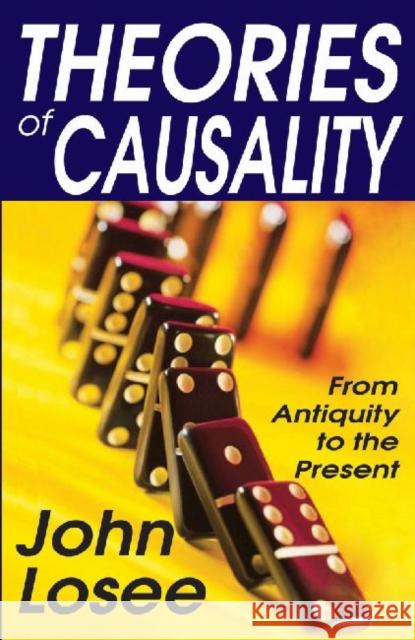Theories of Causality: From Antiquity to the Present » książka
Theories of Causality: From Antiquity to the Present
ISBN-13: 9781412818322 / Angielski / Twarda / 2011 / 218 str.
Theories of Causality: From Antiquity to the Present
ISBN-13: 9781412818322 / Angielski / Twarda / 2011 / 218 str.
(netto: 670,84 VAT: 5%)
Najniższa cena z 30 dni: 654,86
ok. 22 dni roboczych
Dostawa w 2026 r.
Darmowa dostawa!
What types of entities qualify as "causes" and "effects"? What is the relationship between cause and effect? How are causal claims to be assessed? The first question deals with the structure of the world; the second is about theories that interpret the relationship of causes to effects; while the third has to do with proper procedure in science and everyday life. This volume is a wide-ranging history of answers that have been given to these three questions, and their relationship to scientific understanding.Losee presents a number of theories of causality within a historical survey that emphasizes the interrelationship between these theories and developments in science. His analysis displays the strengths and weaknesses of these theories so as to contribute to our present understanding of causal relatedness.Among the positions discussed are those of Aristotle, Hume, Kant, Mill, Salmon, Lewis, and Woodward. Losee's analysis displays the strengths and weaknesses of theories that identify causal relatedness with regularity of sequence, probability increase, energy transfer, exchange of a conserved quantity, counterfactual dependence, and inferability.These theories are judged, in part, by their ability to resolvedifficulties posed by instances of overdetermination, causation by omission, preventive causation, and causation by disconnection. Since applications of the theories to these instances disagree, a strategy of employing multiple concepts of causation is examined.Theories of Causality also describes the particular difficulties for causal analysis posed by quantum mechanics. One such difficulty is the prohibition against combining a causal analysis of a quantum process with a spatio-temporal description of that process.











